Sensors already equip a range of tools to enhance monitoring capacity for conservation. Some of the higher bandwidth technologies, like camera traps and acoustic monitoring systems, have been essential elements of the conservation toolkit for decades, and thus have enough users that we've created dedicated WILDLABS groups to address them. But a whole range of lower bandwidth sensors beyond these core technologies are being increasingly integrated into conservation monitoring systems, and offer rich new insights into the wildlife and ecosystems we're all working to protect. As with many technologies, cost and access have historically been challenges to the adoption of new sensors, but with low-cost and open-source solutions on the rise, we're excited to see what the future of this space holds.
Getting Started with Sensors:
- Watch Shah Selbe's Tech Tutors episode on scaling FieldKit, an open-source conservation sensor toolbox, from a project to a successful conservation tech product.
- Check out our Virtual Meetup about Low-Cost, Open-Source Solutions in conservation tech, including a talk by Alasdair Davies on the Arribada Initiative's work with thermal sensors in early warning systems.
- For a more in-depth introduction, watch the first video in our datalogger mini-series: Freaklabs: How do I get started with Arduino?
In this group, you'll meet others who are using and innovating diverse sensors in their work, discuss ways to make sensors more effective & accessible for conservationists, learn about what sensors are already helping us accomplish in the field, and have the opportunity to ask and answer questions. Join this group to get started!
Header image: Emma Vogel, University of Tromsø
No showcases have been added to this group yet.
- @maddy
- | Dr
Iam a Doctorate in molecular bology by profession & associated with a tech startup, focued on IoT/sensor based automation solutions. But I spend half of my time to document and conserve local & wildlife arond us and trying to explore our technology in conservation.Love to join
- 0 Resources
- 0 Discussions
- 5 Groups
Martin Wainaina Chege is a registered Geomatics Expert with experience in GIS software development, Remote sensing, Surveying, and Environmental and Social Impact Assessment (ESIA) with theoretical knowledge, technical and practical skills in IoT, Software Engineering, data


- 1 Resources
- 7 Discussions
- 5 Groups
trying to understand and improve the welfare of all animals that can suffer


- 4 Resources
- 6 Discussions
- 7 Groups
Cornell University


- 0 Resources
- 0 Discussions
- 12 Groups
- @Fatuma
- | She/Her
I aim to transition my career towards conservation technology after gaining two years of experience in the tech industry.
- 0 Resources
- 0 Discussions
- 13 Groups
Robotics and IoT Engineer living in Costa Rica since 2000
- 0 Resources
- 1 Discussions
- 4 Groups
Neuroscientist & engineer looking for a data/R&D role in conservation.
- 0 Resources
- 0 Discussions
- 17 Groups
- @hyodopenguin
- | she/her
I am currently a rising junior at UC Berkeley studying data science. I hope to apply data with biodiversity, especially by utilizing camera traps for species classification. People in conservation tech are truly living my dream careers, and I can't wait to get even more inspired!

- 0 Resources
- 5 Discussions
- 23 Groups
- @iainhook
- | Mr
Passionate supporter of New Zealands predator free 2050 goals. Founder of both eTrapper Ltd - offering IoT solutions to enhance efficiencies of conservation projects, and Maungakiekie Songbird - a community based project to enhace local habitat around One Tree Hill in Auckland.
- 0 Resources
- 1 Discussions
- 6 Groups
- 0 Resources
- 0 Discussions
- 12 Groups
Systems Engineer at Edge Impulse, experiencce with hands-on edge machine learning for wildlife conservation

- 1 Resources
- 2 Discussions
- 4 Groups
- 0 Resources
- 4 Discussions
- 7 Groups
This month, we're following along with the scientists and engineers from the Simons Collaboration on Ocean Processes and Ecology (SCOPE) and the Monterey Bay Aquarium Research Institute (MBARI) who working together to...
10 April 2018
If you have ever flown over the Pacific and looked down from the window seat, the water seems still. Viewed from this distance, the water appears stagnant with unmoving dashes of waves. This picture strikes discordantly...
3 April 2018
Are you an architect, engineer, designer or a scientist? Can you design and manufacture a prototype open source plant-BES (bio electrochemical system) to power a camera trap and environmental sensors in tropical forests...
3 April 2018
Hundreds of people joined our #Tech4Wildlife photo challenge this year, showcasing all the incredible ways tech is being used to support wildlife conservation. We've seen proximity loggers on Tasmanian Devils in...
3 March 2018
Funding
Empowering communities to monitor & report on their environment
19 February 2018
‘The Field’… Say the words ‘The Field’ to a group of conservationists and it will immediately conjure up vivid memories of everything from sticky wet rainforests to burning dusty deserts. What’s more, it’s almost...
17 January 2018
Following the UK Government’s landmark announcement of plans to introduce a complete ban on the domestic trade in ivory, it was fitting that a new machine learning product designed to tackle the supply end of this...
6 December 2017
Article
A new research project is looking to investigate whether technology combined with the ancient skills and knowledge of Namibian trackers can help save cheetahs from extinction. Called FIT Cheetahs, the research project...
4 December 2017
With Arctic sea ice disappearing, can advanced sensor technologies provide insights into an ecosystem on the brink?
30 November 2017
We are delighted to announce that British conservation technologist Alasdair Davies and the Dutch team of Laurens de Groot and Tim van Dam from the ShadowView Foundation are the winners of the first international Human...
1 November 2017
Our panel of international experts has been hard at work reviewing the 47 proposals we recieved for innovative technological tools to address human wildlife conflict. The panelists have systematically been assessing the...
20 October 2017
The inherent complexity of not only deploying technologies in the field but also doing so in a scientifically rigorous manner can prove a substantial barrier for the effective use of conservation technologies, and clear...
11 October 2017
August 2025
event
September 2025
event
March 2026
November 2023
event
17 Products
Recently updated products
121 Products
3 R&D Projects
84 Organisations
Recently updated products
Recently updated R&D Projects
Recently updated organisations
| Description | Activity | Replies | Groups | Updated |
|---|---|---|---|---|
| Dear colleaguesWe study CH4 (and, CO, CO2) emissions from solid waste dumps in Brazil. We seek a low-cost and accurate sensor to make a... |
|
Sensors, Latin America Community | 2 years 9 months ago | |
| Hi Everyone,We chose sigfox becuase it seems to have better range and is plug-play, whereas LoRa requires more custom programming and updating. Getting a gateway cost us $... |
|
Animal Movement, Build Your Own Data Logger Community, Camera Traps, Connectivity, Emerging Tech, Sensors | 2 years 9 months ago | |
| here's an example of what I'm doing. |
|
Sensors | 2 years 9 months ago | |
| Hi there Camilo, What an interesting project! If you are looking for a lower cost, but effective tools for acoustic monitoring you might want to look into two options: ... |
|
Acoustics, AI for Conservation, Data management and processing tools, Sensors, Software Development, Latin America Community | 2 years 10 months ago | |
| Done lots of this over the years and it depends on the species really. If you want incubation behaviour and hence success or otherwise using temperature then the Thermocron... |
|
Animal Movement, Sensors, Build Your Own Data Logger Community, Camera Traps | 2 years 10 months ago | |
| I don't think KEH would influence accelerometry at all.One other way to think about it is - the KEH is a movement sensor itself.The GPS is quite a severe factor in the energy... |
|
Animal Movement, Emerging Tech, Sensors | 2 years 11 months ago | |
| Hello! I have 2 rescued sulcata tortoises in my care. I would like to put some kind of tracking device on them so I can find them if they... |
|
Sensors | 3 years ago | |
| On the topic of potential sources for harvested power, and in the category of "out there"... I have spent some considerable (likely too much) time exploring harvesting... |
+21
|
Sensors | 3 years 1 month ago | |
| Hey all!I am Ayush, a core team member of my school's Robotics Club (Center For Innovation, Indian Institute of Technology, Madras). There... |
|
Drones, Sensors, Wildlife Crime, Early Career | 3 years 1 month ago | |
| Dear Community,Together with Hackster.io, Seeed Studio is very happy to jointly organize “IoT Into the Wild Contest for Sustainable Plant... |
|
AI for Conservation, Connectivity, Emerging Tech, Open Source Solutions, Sensors | 3 years 2 months ago | |
| What exact nutrients or parameters are you trying to measure? |
|
Sensors | 3 years 2 months ago | |
| Iray PH35. like a DV . thermal camera. 640*328,35mm. could make videos. 2400 USD, china product, easy ship to Vietnam. 1km is the range to check monkeys... |
+9
|
Sensors | 3 years 4 months ago |
Using GoPro cameras? Why not get sponsored by them?
29 December 2015 9:40pm
1 November 2016 1:09pm
All of it can be applied to conservation though!
1 November 2016 1:45pm
I am not suggesting that GoPro cameras do not have applications in conservation, but if you follow the link you posted you will find questions being asked that a conservation project will be unable to answer.
Zoohackathon: 'END LOOP - Coding to end wildlife trafficking'
22 September 2016 12:00am
Perspectives from the World Ranger Congress
10 August 2016 12:00am
Has technology provided a one-stop measure to halt albatross bycatch in fisheries?
5 August 2016 12:00am
How can technology help us monitor those small cold-blooded critters that live in caves?
25 July 2016 12:00am
Passive Acoustic Monitoring: Listening Out for New Conservation Opportunities
29 June 2016 12:00am
Wildlife Crime Tech Challenge Accelerator Bootcamp
24 June 2016 12:00am
Science Makers: sensor networks on 2 July
22 June 2016 8:09am
22 June 2016 4:04pm
Thanks for sharing this event, Jenny! Looks really interesting, hope to see you there.
Portable DNA Sequencer
24 March 2016 4:51pm
26 April 2016 6:53pm
Thanks, Adam, for initating a discussion about the MinION. It certainly seems to have a lot of promise, however the scientists who are currently field testing it detect very high error rates. It's been on my radar as a possible field kit for extracting DNA out of wood as it gets processed into various forest products through the supply chain. The implication here is that the part of a tree that is made into forest products is made up of dead cells and thus it is very difficult to extract quality and quantity DNA out of wood. This, combined with the high error rates makes it 'still very much in development' for forest products - but perhaps it'd be suitable sooner for other applications in the conservation world. There's a professor at New Mexico State Univ. who has been working with the MinION for a while now on wood - Brook Milligan. He recently gave a talk at the 'London Calling' Oxford Nanopore (maker of the Minion) conference that is worth watching: https://londoncallingconf.co.uk/2015/videos/view/241
22 June 2016 10:43am
Hi John and Adam,
I've been hearing a lot about Oxford Nanopore Technologies and MinION over the last few months, and while it sounds fanastic, it's been difficult to get an understanding about the potential and limitations of this piece of tech, particularly as relates to conservaiton applications. So hearing your experiences, John, is really interesting.
For anyone interested in learning more about MinION and nanopore technology, I've just came across a thorough article in the Atlantic about the sequencer that was helpful for me as a total novice (though a very interested one!) in the world of nanotechnology and eDNA. It gives context to the MinION in terms of history, current applications and potential applications. It also features one of our community members, Jon Whetton, who is also a USAID Wildlife Crime Tech Challenge Winner, talking about the potential applications to conservation:
The etymology of VolTRAX may be farcical, but its purpose is not. This domino-sized add-on for the MinION is designed to prepare a biological sample—say bodily fluids, or swabs of soil—for sequencing. It moves liquid through a network of fine channels, bombards it with chemical reagents to extract DNA, and loads that DNA into the MinION. “We spend a lot more time in the lab preparing samples than we do sequencing,” says Loman. “If, and it’s a big if, you could drop the clinical sample onto the chip that does it all for you, it would be hugely advantageous.”
VolTRAX is set to go out to early users this summer. Jon Wetton, a geneticist and forensic scientist at the University of Leicester, wants to use it to fight illegal wildlife trafficking, by sequencing telltale genes that act as identity badges for different species. Conservationists have already used this technique, known as DNA barcoding, to track sources of elephant ivory or identify whale meat posing as sushi. But samples must be shipped for analysis, and “you’re looking at weeks or months to get the results back,” says Wetton. “That can’t be done on anything perishable, or if you’ve got a suspect in custody. But with an on-the-spot test, you could confiscate, arrest, or do something about it.”
With a nanopore sequencer, inspectors could tell the difference between a cut of beef or bushmeat from threatened apes and monkeys. They could analyze the blood on a suspected poacher’s tools to reveal the identity of the last animals it cut. They could work out if seized caviar belong to legitimate fish species or endangered sturgeon. “You could answer a whole slew of serious wildlife crime issues with the same test,” says Wetton.
That still leaves the significant problem of parsing the data, but Oxford Nanopore has a solution for that, too: an online hub called Metrichor, where people can connect to ready-made apps for analyzing DNA sequences. One such app, developed by Oxford Nanopore itself, is called “What’s In My Pot?” or WIMP. It takes sequences and identifies the organisms they belong to. The team have already field-tested it on microbes from a sewage-contaminated river behind their own building, and on unpasteurized milk from the back of a New York lorry.

Sensory: BBC Wildlife Director John Downer & the technology of ‘spy-cam’ filmmaking
13 May 2016 11:55am
Utilizing thermal imaging technology
27 April 2016 7:43pm
Text Messages from Teenage Gannets
25 April 2016 12:00am
Eggs Eggs and more Eggs
2 March 2016 1:05pm
24 March 2016 4:42pm
Latest news about this project was picked up by the BBC world service for a short interview
http://www.bbc.co.uk/programmes/p03nwl8g
You can also read more here:
http://spectrum.ieee.org/geek-life/hands-on/build-an-electronic-vulture-egg
Underwater sensors
18 March 2016 12:39am
Could Big Data Have Saved Cecil the Lion?
4 January 2016 12:07pm
12 February 2016 7:16pm
It's very interesting what you say about the strength of a name. I do think that anthropomorphism can be a good thing in the case of conservation. By giving Cecil a name and a life story (incidentally a very cosy British name, which is interesting in itself), it brings the issue into emotional focus. We are attracted to characters and stories, not data. The plight of a named lion strikes a stronger chord than the numbing statistic of 600 "un-named" lions dying every year.
So do we care more about nature if we make anthropomorphise it? I think yes, as it creates a relatable personal connection with our own lives.
I'd like to get in touch with you next week as this is an area I am very interested in exploring and I hope I can be of help. Paul
14 March 2016 4:37pm
We're just starting to look a lot at Storytelling in Wildbook (http://www.wildbook.org).
This is what a data profile looks like in Wildbook:
http://www.whaleshark.org/individuals.jsp?number=A-001
While we allow for basic anthropomorphism via nicknaming, it's still a very data centric view of what a combined group of reserchers knows about the animal.
We have experimented with social media profiles which interestingly have an analogous data schema as mark-recapture:
http://fb.wildme.org/wildme/public/profile/WS-A-001
But we want to go ever further with storytelling mediums (e.g., story maps?) that can be automated from scientific data input, especially where cit sci data and reserch data can be reliably mixed.
So in addition to a name, we want to build a relationship through a portrayal of its life history and even potentially a view of the social network of the animal participates in (if such data can be shared safely.).
16 March 2016 7:22am
That's great Jason. I think your approach can be very successful. I'm a little bit familiar with Wild Book through my contacts at IBEIS, who I believe you work with quite closely. I'd love to see how the work we are doing at Internet of Elephants can incorporate whale shark data. I'll message you separately to discuss.
An Internet of pigeons?
14 March 2016 4:16pm
Ecotech Grants from the Captain Planet Foundation
18 February 2016 12:00am
Bringing Conservation Technology to Life
17 February 2016 12:00am
Wildlife Crime Tech Challenge: Winners Announced!
22 January 2016 12:00am
Deep Coral Reef Exploration and Discovery: Two-way Technological Flow
24 December 2015 12:00am
Cheap Space, DIY Imaging and Big Data
21 December 2015 12:00am
The Impact of the Internet of Things
10 December 2015 12:00am
The Social Lives of Conservation Technologies and Why They Matter
2 November 2015 12:00am

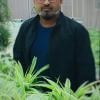










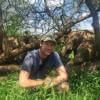





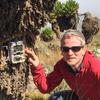

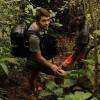


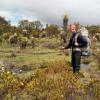





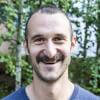




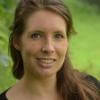










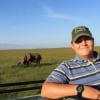





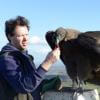
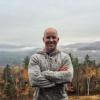
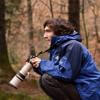

31 October 2016 2:47pm
Sport, Music, Event, Film/Photo are the only options I see on that link - nothing for conservation research.